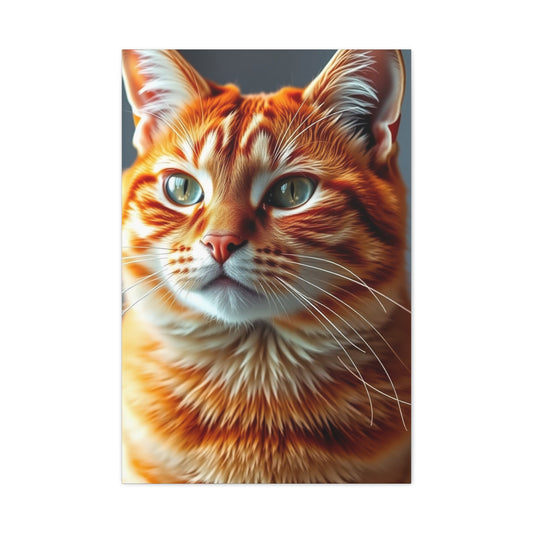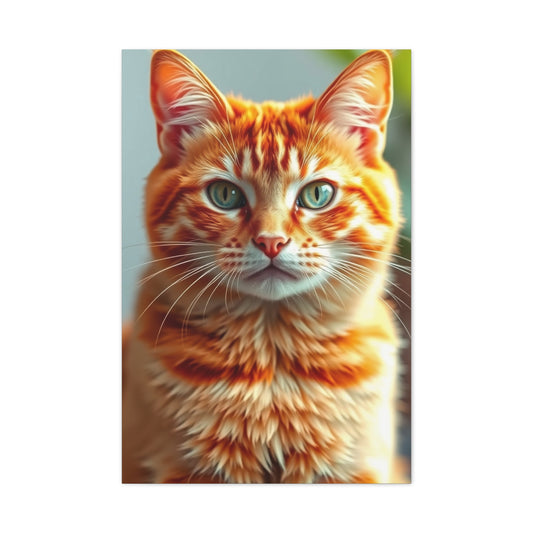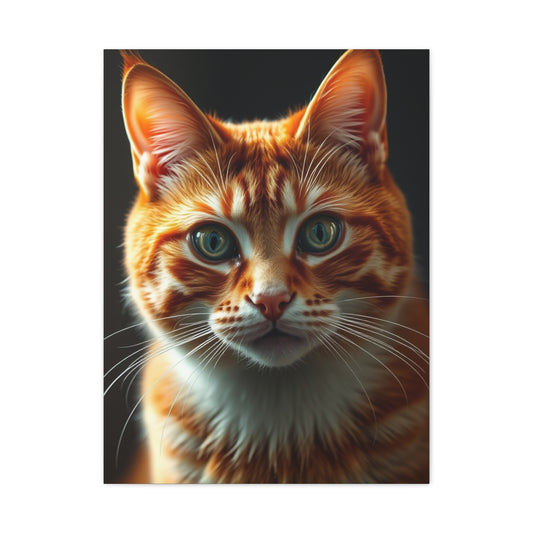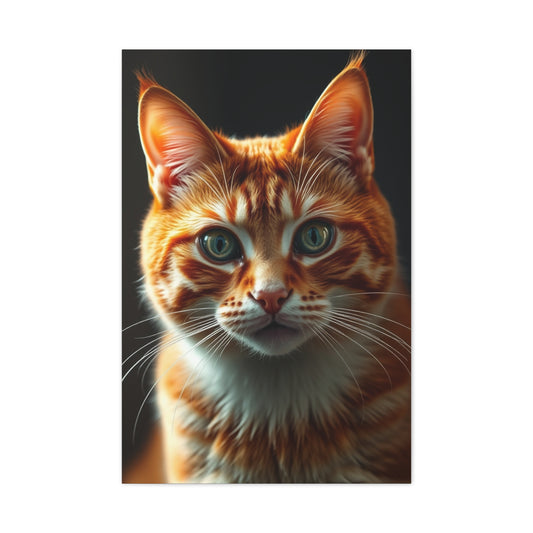Creating visually compelling photographs requires more than technical proficiency; it demands an understanding of compositional harmony. While techniques like the rule of thirds, golden ratio, and leading lines often dominate photography discourse, the concept of radial balance remains one of the most underappreciated yet impactful compositional tools. With its ability to generate visual rhythm, focus, and depth, radial balance acts as a powerful design element that enhances the overall aesthetic and psychological appeal of an image.
This compositional method leverages circular symmetry and centralized visual arrangements to guide the viewer's gaze in a fluid, organic motion. Rooted in both nature and classical art traditions, radial balance not only fosters a sense of cohesion within the frame but also elevates the emotional resonance of the photograph. Whether you're shooting urban geometry or natural macro subjects, mastering this structure can unlock a new dimension in your creative process.
Understanding Radial Balance in Photography
In the visual arts, balance refers to the distribution of visual weight in a composition. It determines whether an image feels stable and harmonious or chaotic and disjointed. Broadly, balance can be categorized into formal (symmetrical) and informal (asymmetrical) types. Radial balance is a subtype of formal balance in which the compositional elements are arranged around a central focal point, extending outward in circular or spiral formations.
In photography, this kind of balance creates a visual journey—from the core of the image outward—capturing and holding the viewer's attention. It echoes patterns we often observe in the natural world, such as the whorls of a sunflower, the spiraling of a nautilus shell, or the concentric ripples of water. These circular formations foster a sense of completeness and serenity, lending the photo a contemplative quality.
What makes radial balance distinctive is its ability to blend symmetry with motion. Unlike bilateral symmetry, which simply mirrors one side of the image to the other, radial symmetry introduces dynamic flow while maintaining equilibrium. This fusion makes it particularly compelling in photography, where static images must evoke movement and narrative.
Radial Composition Beyond Photography
The influence of radial symmetry stretches far beyond the realm of photography, threading its way through countless disciplines, philosophies, and eras of creative expression. From ancient spiritual diagrams to modern architectural feats, radial design principles have long been harnessed to evoke emotional resonance, structural integrity, and a sense of visual completeness. The power of radial balance lies not only in its geometric charm but also in its symbolic richness—offering a gateway to ideas of unity, eternity, and cosmic order.
|
Related Catagories: |
In many cultures, circular forms hold spiritual significance. In Hindu and Buddhist traditions, mandalas stand as archetypal examples of radial structure. These intricate compositions, rich in cultural and metaphysical symbolism, are crafted as meditative tools that guide the mind toward introspection and enlightenment. Each layer of a mandala builds outward from a central point, reflecting the spiritual journey from the self toward universal understanding. The radial design serves not only an artistic purpose but also a deeply psychological one—it encourages focus, contemplation, and mental clarity.
These sacred circles are meticulously composed, often featuring concentric layers of floral, geometric, and symbolic motifs. The symmetry and repetition within the radial layout cultivate a visual rhythm that mirrors the cyclical nature of existence—birth, death, and rebirth. By focusing attention inward before radiating outward, radial symmetry becomes both a compositional technique and a metaphor for inner alignment and cosmic harmony.
Radial Patterns in Western Art and Sacred Architecture
The aesthetic and structural potency of radial composition is equally evident in Western artistic and architectural traditions. In Gothic cathedrals, rose windows serve as prime examples of radial balance rendered in stained glass. Positioned prominently above the entrance or altar, these windows often feature elaborate tracery radiating from a central point. The interplay of light and color through these radial designs creates a transcendent atmosphere, inviting awe and spiritual reverence.
Similarly, in Islamic art and architecture, radial motifs dominate tile mosaics and ornamental facades. Complex arabesques and star-like mandala patterns unfold from the center, reinforcing themes of infinity and divine order. These compositions deliberately avoid figurative representation, relying instead on geometry to express sacred truths. Here, radial symmetry isn't just decorative—it’s deeply philosophical, reflecting the universe's orderly structure and the indivisible oneness of existence.
During the Renaissance, radial principles reemerged in architectural marvels such as the dome of Florence Cathedral and the circular floor plans of classical rotundas. These structures reflected the rebirth of classical knowledge and humanism. Architects of the time understood that radial balance could imbue buildings with both grandeur and grace, creating centralized spaces that echoed celestial geometry.
The Rise of Radial Forms in Modern and Abstract Art
In more recent history, the appeal of radial design found fertile ground within avant-garde movements. During the early 20th century, the Bauhaus school redefined the relationship between function and form, embracing geometric structures—circles, arcs, and radial patterns—as elemental visual languages. Radial compositions, devoid of representational content, became tools for exploring pure emotion, spatial relationships, and psychological tension.
Artists and designers associated with Russian Constructivism also favored radial and geometric configurations, using them to symbolize industrial progress, collective energy, and revolution. The central axis of many of their works served as a metaphor for ideological focus and movement. These compositions often radiated outward, echoing the explosive force of social change and innovation.
Abstract Expressionists like Kandinsky and Kupka employed circular symmetry to represent sound, motion, and the ineffable. For these artists, radial arrangements became a way of translating metaphysical experiences onto the canvas. In their hands, the circle was not only a compositional choice but an expressive one—conveying spiritual elevation, emotional release, and cosmic vibration.
These modern interpretations of radial symmetry underscore its versatility. While earlier uses were often anchored in spiritual or structural imperatives, the 20th-century avant-garde demonstrated how radial balance could transcend the literal and delve into the psychological and emotional.
Radial Balance in Decorative and Industrial Design
Beyond the confines of galleries and temples, radial symmetry has permeated everyday design. From antique clocks and compass roses to contemporary logos and furniture layouts, circular balance continues to inform aesthetics and ergonomics alike. In interior design, radial arrangements can be found in the layout of circular rugs, chandeliers, and ceiling medallions—all of which serve as both focal points and organizational anchors within a space.
In product design, radial elements frequently appear in items requiring central functionality, such as wheels, speakers, and fans. These designs naturally draw the user’s eye toward the center, streamlining interaction and enhancing usability. Here, radial balance serves not only a visual function but also a pragmatic one—improving clarity, guiding user behavior, and reinforcing brand identity.
Even in digital and interface design, radial menus and progress indicators use circular symmetry to enhance user experience. These arrangements capitalize on the brain’s preference for balanced, centered visuals, making interfaces feel intuitive and visually stable. Radial design, when thoughtfully applied, creates a seamless connection between aesthetics and utility.
Psychological and Symbolic Impact of Radial Symmetry
What makes radial symmetry so universally resonant is its psychological accessibility. The human brain is naturally drawn to symmetrical patterns, particularly those that radiate from a central point. This preference is not arbitrary—it stems from the way our visual system processes information. Radial forms, with their inherent balance and clarity, are easier to recognize, interpret, and remember.
Furthermore, radial balance carries subconscious associations with unity, protection, and inclusivity. Unlike linear compositions that guide the eye along a path, radial compositions create a sense of enclosure and immersion. They invite viewers inward, fostering a sense of centeredness and calm. This makes radial design especially effective in conveying emotional or spiritual messages.
From the petals of a lotus to the halo in religious iconography, circular motifs have long been used to symbolize sanctity, completeness, and enlightenment. These associations continue to inform modern visual culture, even in secular contexts. When photographers, designers, or architects employ radial balance, they tap into a deep well of collective visual memory—a memory shaped by millennia of artistic, spiritual, and natural experiences.
Bridging the Past and Present Through Radial Design
In a world saturated with fleeting visuals and rapid consumption, radial composition offers something more grounded—an invitation to pause, center, and reflect. Whether manifested in a cathedral window, a corporate logo, or a symmetrical photograph, radial symmetry connects us to a lineage of visual storytelling that spans continents and centuries.
Today’s artists and visual creators stand at a crossroads between tradition and innovation. By understanding the historical context and psychological potency of radial balance, they can infuse their work with layers of meaning that resonate across cultures and media. Whether designing a building, illustrating a concept, or composing a photograph, the circle remains a timeless and powerful visual anchor.
Incorporating radial composition into visual work is not merely an aesthetic decision; it’s a philosophical one. It reflects an understanding of pattern, rhythm, and the innate human desire for harmony. As we continue to explore new mediums and styles, radial balance remains an enduring testament to the beauty of symmetry and the universal language of design.
Incorporating Radial Balance into Your Photography
Integrating radial balance into your photographic practice involves far more than simply identifying round shapes or centered compositions. It demands a refined eye for spatial harmony, thoughtful subject positioning, and a calculated manipulation of perspective. This composition technique invites viewers into a structured yet dynamic experience—one where visual energy emanates from a core and gently spirals outward, establishing both a visual rhythm and an emotional tether.
To successfully utilize radial balance, begin with a conscious search for subjects that naturally exhibit radial forms or have the potential to be framed in a circular pattern. These could range from macro botanical elements to expansive architectural structures. Stairwells viewed from directly above or below, the whorled petals of a flower, the curvature of domed interiors, fountains captured from a bird’s-eye view, and the intricate spokes of mechanical gears or fans are all exemplary subjects.
|
Related Catagories: |
Each of these examples contains inherent geometric flow—lines or forms that radiate from a central point. Identifying these subjects in your environment and isolating them within your frame allows the radial effect to emerge organically. However, simply finding a circular object is not sufficient. The success of radial composition lies in how you interpret and capture that object through framing, focal length, perspective, and light.
Mastering the Central Focal Point
Centralized framing is critical when aiming to emphasize radial symmetry. Unlike rule-of-thirds composition, which intentionally offsets the subject to create dynamic tension, radial balance thrives on equilibrium. Positioning the focal point at or near the geometric center ensures that all other elements orbit symmetrically. This precise alignment channels the viewer’s eye directly to the heart of the image before allowing it to explore the surrounding visual structure.
To achieve this with consistency, take time to observe the scene. Consider using a tripod and grid lines on your camera to fine-tune your composition. When photographing circular architecture, such as oculus windows or rotundas, finding the exact midpoint can create a hypnotic sense of symmetry. This careful placement helps reinforce the visual message that all elements are in deliberate communication with the center.
Optics Matter: Choosing the Right Lens
Lenses play an indispensable role in amplifying radial balance. Wide-angle lenses are particularly suited for this purpose, as their inherent distortion enhances depth and curvature. When pointed directly at a radial subject, they exaggerate spatial tension and draw the eye inward, accentuating the gravitational pull of the center.
Ultra-wide lenses, especially when paired with a full-frame sensor, can intensify this visual dynamic even further. The periphery of the image stretches slightly, adding to the centrifugal effect of the radial pattern. This tool is especially effective in tight architectural spaces—like staircases or domes—where the lens allows the photographer to capture the full circular form in a confined field of view.
On the other hand, macro lenses can be used to explore radial symmetry in minute detail. Close-up images of natural elements such as dew-covered leaves, sunflowers, or even spider webs can unveil mesmerizing radial patterns often overlooked by the naked eye. By focusing on the structure of small subjects, you can create compelling compositions that celebrate the elegance of symmetry and texture.
The Power of Perspective and Camera Angles
Perspective is one of the most influential tools in creating effective radial balance. How and where you position your camera in relation to the subject can radically alter the interpretation of the composition. For instance, shooting from directly overhead—such as from a balcony or drone—can flatten a scene into a symmetrical pattern that radiates outward with impeccable uniformity.
Conversely, a worm’s-eye view, looking upward into a chandelier or spiral staircase, lends a sense of awe and vertigo, exaggerating vertical depth while preserving radial cohesion. In either case, symmetry is maintained, but the emotional tone and spatial dynamics shift. These unconventional angles also allow everyday scenes to appear extraordinary, revealing complex structures that might otherwise go unnoticed.
Architectural photography often benefits from such approach-oriented experimentation. The apex of a dome, the focal point of a mosaic floor, or the base of a fountain can be magnified through upward or downward angles that center and radiate form. Shadows, highlights, and textures then enhance the symmetry, giving the image both dimensionality and movement.
Harnessing Light to Emphasize Radial Flow
Light, particularly natural directional light, plays a crucial role in emphasizing radial compositions. When shooting outdoors, consider how sunlight interacts with your subject. For instance, rays breaking through an oculus or surrounding a subject in a halo-like burst can reinforce the visual pull of the center. Backlighting, especially when partially obstructed by radial objects, can cast shadows that mimic or accentuate radial patterns.
In interior settings, consider the role of artificial light sources—circular chandeliers, ceiling fans, or even overhead fixtures. Use these as compositional anchors that radiate both literal light and visual weight from the middle of the frame outward. Experimenting with long exposures in low light can also produce dramatic radial effects, such as capturing the trails of moving lights in a circular plaza or the motion of carousel rides at night.
Incorporating Human Subjects into Radial Compositions
Radial balance can be dramatically enhanced by introducing human figures into the frame. Placing a subject at the epicenter of a radial environment—such as beneath a dome or within a spiral staircase—automatically draws attention to the person while preserving the compositional flow. This technique works particularly well in editorial, portrait, and travel photography, where the setting plays a central role in telling the story.
Silhouetting your subject against a backlit radial background creates a sense of scale and focus, while subtly incorporating narrative. A person standing in the center of a radial plaza, framed by symmetry, can evoke themes of introspection, solitude, or transcendence. Similarly, positioning a subject slightly off-center within a predominantly radial space can introduce a degree of tension while maintaining structural unity.
Creating Movement and Depth Through Radial Lines
One of the unique advantages of radial balance is its ability to evoke motion. Although the image is static, the lines that extend outward from a center point suggest movement, rhythm, and continuity. This dynamic quality allows the image to feel alive—inviting the viewer’s gaze to travel, to orbit, and to discover.
Leading lines that radiate from the center outward, or from the perimeter inward, guide visual navigation. Roads, railway tracks, floor tiles, and tree branches can all serve as organic radial elements when framed correctly. The depth created by these lines fosters a three-dimensional sensation within the two-dimensional photograph, enhancing immersion.
Combining Radial Balance with Other Compositional Techniques
Although radial balance can stand on its own, combining it with other compositional techniques can lead to even more powerful imagery. Integrating elements like framing, contrast, texture, and negative space can augment the impact of the radial design.
For instance, you might frame a circular architectural feature with the angular lines of a doorway or capture radial patterns within a field of uniform color to emphasize contrast. Incorporating depth of field—such as a sharp center with a softly blurred perimeter—further isolates the subject while reinforcing the sense of expansion from the core.
These hybrid techniques allow for both aesthetic complexity and visual intrigue, expanding your creative toolbox as a photographer.
The Elegance of Intentional Symmetry
Mastering radial balance in photography is both an artistic challenge and a creative delight. It invites you to slow down, observe the world with greater sensitivity, and compose images with architectural precision. When used thoughtfully, this compositional technique yields images that are not only visually compelling but emotionally resonant—photographs that engage the viewer from the very first glance and continue to reveal structure and intention upon closer inspection.
Whether you're capturing the spirals of nature, the symmetry of built environments, or the subtle elegance of everyday scenes, radial balance provides a powerful framework for expression. Through intentional positioning, calculated lens choice, and strategic lighting, you can transform ordinary visuals into dynamic narratives that echo with balance, order, and timeless beauty.
Everyday Subjects that Feature Radial Symmetry
Radial symmetry in photography is not reserved for rare or exotic subjects. In fact, one of its most enriching qualities is how effortlessly it integrates into daily observation. Unlike other composition techniques that might require complex setups, unique lighting conditions, or distant locations, radial balance is often hiding in plain sight—embedded in the architecture we pass, the objects we use, and the nature that surrounds us.
Photographers who cultivate a habit of visual mindfulness can uncover radial patterns in places most would overlook. These subjects, when approached with intent and framed thoughtfully, become ideal candidates for refining compositional technique. By paying close attention to shape, repetition, and alignment, you can capture striking images rooted in symmetry and centeredness using elements that exist within everyday environments.
Spiral Staircases Photographed Vertically
Spiral staircases are among the most iconic representations of radial symmetry. When viewed from the top or bottom, their architectural form coils around a central void, creating a hypnotic vortex-like visual. The handrails, steps, and supporting beams all contribute to this circular rhythm, drawing the eye inward in a natural spiral.
Photographing a staircase vertically—either looking straight down from above or shooting upward from the base—amplifies the radial balance. This perspective often reveals elegant geometry and repeating patterns that appear sculptural in their precision. For maximum impact, ensure the camera is perfectly aligned with the central axis. A tripod or gimbal can help stabilize the shot, especially in dimly lit indoor stairwells.
Beyond just the form, staircases also offer opportunities for lighting contrast. Shadows cast along the curve or light beams entering from a nearby window can accentuate the sense of motion and depth. Whether in historical buildings, parking structures, or modern design spaces, spiral staircases offer endlessly variable scenes for radial compositions.
Domed Architecture with Oculus or Central Skylights
Architectural domes represent another compelling manifestation of radial balance. Their structure typically radiates outward from a central point, often an oculus, skylight, or decorative ornament at the apex. When captured from directly below, these ceilings resemble celestial mandalas—harmonious, intricate, and richly detailed.
Photographing upward into domes not only highlights their structural engineering but also invokes a spiritual or meditative tone. Domes often appear in sacred or monumental spaces such as cathedrals, government buildings, museums, and observatories. The curvature of their design, combined with ornate detailing, results in layered symmetry that speaks to both order and transcendence.
When composing these shots, center the oculus or dome cap within the frame to ground the radial effect. Wide-angle lenses are particularly useful in capturing the full breadth of the architecture without sacrificing the clarity of the center. Consider shooting at different times of day to observe how changing light affects shadows and contrast.
Close-Up Images of Flowers, Especially Layered Petals
Flowers are natural masterpieces of radial design. Many blooms, particularly those like dahlias, chrysanthemums, and sunflowers, grow in concentric rings of petals that radiate from a central core. These organic forms demonstrate the inherent geometry found in biology—symmetry born from genetic precision and evolutionary utility.
Capturing flowers in close-up allows you to explore their radial structure in exquisite detail. Use a macro lens or a camera with strong close-focusing ability to isolate the bloom and fill the frame. Focus on aligning the center of the flower with the center of your composition to maximize radial balance. Soft backgrounds created by shallow depth of field can help eliminate distractions and keep the viewer’s attention on the symmetrical arrangement.
Natural lighting works well for floral subjects, especially diffused morning or late afternoon light, which brings out subtle textures in the petals. Alternatively, backlighting can highlight transparency and edge details, adding another layer of visual intrigue to the radial form.
Macro Photography of Eyes, Seashells, or Plant Cores
Macro photography opens up a microscopic world of radial patterns that often escape casual observation. The human or animal eye, for instance, features iris textures that spread outward from the pupil in finely detailed radial streaks. This organic burst of texture and color is ideal for capturing natural symmetry.
Similarly, seashells—especially nautilus shells and other spiral mollusks—present logarithmic spirals that embody both radial and fractal geometry. Their structures mirror mathematical concepts of growth and balance, making them fascinating subjects for close-up photography.
Plant cores, such as those found in succulents or cacti, also offer impressive radial symmetry. The arrangement of leaves or spines often follows the Fibonacci sequence, creating patterns that feel both mathematical and artistic. These subjects are ideal for controlled shooting environments where you can manipulate lighting and background to enhance visual clarity.
To make the most of these macro opportunities, use a tripod to stabilize your camera and prevent motion blur. Manual focus is also advisable, as autofocus systems may struggle with the minute details and shallow depth of field involved in close-up work.
Street Scenes Featuring Roundabouts, Circular Fountains, or Rotundas
Urban environments are rich with opportunities for radial composition, particularly in elements designed for central access or symmetrical layout. Roundabouts, plazas, and circular fountains all feature centralized design intended for both aesthetic and functional purposes. When captured from an elevated perspective—such as a rooftop, drone, or pedestrian bridge—these subjects can transform into dramatic radial landscapes.
The converging roads of a roundabout, for example, create directional lines that reinforce radial flow, especially when vehicles, pedestrians, or bicycles animate the scene. Similarly, a circular plaza or rotunda can be framed to emphasize its architectural symmetry and dynamic patterns of use.
To effectively photograph these street scenes, consider the time of day and how shadows may interact with the radial forms. Golden hour light can cast elongated shadows that enhance the sense of depth and roundness. Nighttime shots with long exposure can capture light trails circling around roundabouts, producing stunning kinetic radial effects.
Industrial Elements Like Wheels, Turbines, and Clocks
In the realm of man-made objects, industrial design often incorporates radial symmetry for mechanical and aesthetic reasons. Items like wheels, turbines, clock faces, and engine components are built with evenly spaced elements extending from a central hub, ensuring both balance and functional rotation.
These elements make excellent subjects for exploring radial symmetry with a more mechanical or abstract tone. Whether capturing the spokes of a vintage bicycle wheel, the blades of a jet engine, or the ornate face of an antique clock, industrial components offer crisp, precise lines that radiate from a unified center.
Use side lighting to bring out textures such as metal grain, rust, or wear, adding character and depth to your radial image. In some cases, extreme close-up or macro lenses can further enhance the abstract quality of the composition by emphasizing symmetry over object identity.
Finding Symmetry in the Everyday
Perhaps the most rewarding aspect of seeking radial balance in everyday subjects is the development of an observational eye. By training yourself to notice circular structures and centered patterns in common environments, you begin to uncover visual opportunities that others miss. From manhole covers to floral arrangements, from decorative tiles to ceiling fans, radial forms permeate the world in subtle and stunning ways.
This habit of mindful seeing not only enhances your photography but also deepens your appreciation for the rhythm and symmetry present in daily life. With practice, you’ll begin to identify radial patterns intuitively, recognizing them not as isolated phenomena but as an integral part of visual language.
The Role of Nature in Teaching Radial Balance
Nature serves as an unparalleled instructor in the art of radial balance. Across ecosystems, climates, and species, we find a consistent recurrence of circular harmony and geometric repetition. From the tiniest formations on a leaf to the vast structures of celestial bodies, the natural world is infused with radial symmetry that offers both aesthetic inspiration and compositional clarity. For photographers seeking to refine their visual language, nature presents a limitless canvas where order and beauty coexist.
Radial balance, characterized by elements radiating outward from a central point, is frequently expressed in botanical, geological, meteorological, and biological forms. These natural compositions are not artificially imposed; rather, they are the product of growth patterns, energy dispersion, and structural efficiency. Observing and capturing these innate arrangements helps photographers develop not only technical skill but also a deeper sensitivity to design and visual storytelling.
Spiraled Seeds and Botanical Geometry
One of the most iconic examples of natural radial balance appears in the seed arrangements of flowers, especially the sunflower. The seeds form in spirals that follow the Fibonacci sequence, producing a pattern that maximizes efficiency while maintaining visual elegance. This form of radial symmetry is not only mathematically fascinating but also visually compelling. The way these seeds radiate from the center creates a hypnotic pattern, pulling the viewer's eye inward and outward simultaneously.
Photographing this botanical design requires a close-up approach. Using a macro lens or extension tubes, you can fill the frame with the central spiral, allowing the repetitive structure to dominate the composition. The consistency in spacing, coupled with textural variation and subtle shading, results in an image that feels both intricate and harmonious. These kinds of close-ups underscore how natural radial patterns can serve as meditative focal points in photography.
Tree Rings and Temporal Symmetry
Radial balance is also evident in the cross-sections of tree trunks. The growth rings, which form concentric circles radiating from the pith, represent the passage of time and environmental influence. Each ring tells a story of seasons, water availability, and climate changes. When photographed, these patterns offer not only compositional depth but also a narrative element—where structure meets storytelling.
To capture the essence of tree rings, aim for even lighting and a head-on perspective. A circular crop or tight framing around the rings enhances the radial pull. Pay attention to texture, cracks, and tonal shifts within the rings, as these elements add dimension and complexity. The resulting image becomes more than a study in symmetry; it becomes a metaphor for growth, resilience, and natural rhythm.
Webs, Water, and the Architecture of Balance
Spider webs present another brilliant expression of radial structure. Their radial threads stretch from a central hub, anchoring the web to its environment, while the spiral threads spiral outward, creating a trap both functional and stunning. Dew-covered webs at dawn, illuminated by diffused backlight, exemplify how radial symmetry and delicate craftsmanship intersect in nature.
Photographing webs demands patience and specific conditions—early mornings when dew is present and wind is minimal are ideal. Using a shallow depth of field helps isolate the web from the background, highlighting the radial framework and minute details like water droplets clinging to the silk threads. These glistening beads often form their own miniature radial patterns, echoing the larger symmetry and creating layered compositions.
Water also plays a crucial role in demonstrating radial effects. Circular ripples, triggered by a droplet falling into a still pond, expand concentrically from the point of impact. These fleeting events are perfect for high-speed photography, allowing you to freeze the moment and capture natural radial motion in its purest form.
Patterns in Dried Earth and Frozen Surfaces
Radial balance is not limited to living organisms—it is also found in geological and environmental phenomena. Dried mud, for instance, often cracks in a radial or polygonal pattern due to the contraction of the earth as it loses moisture. These radiating fissures create an abstract yet structured composition that feels organic and primal.
Similarly, frost patterns on glass surfaces in winter often mimic botanical or crystalline radial structures. The ice grows outward from a nucleation point, branching in symmetrical directions that resemble leaves, feathers, or starbursts. These frozen formations make for compelling macro subjects, especially when backlit to emphasize translucence and edge detail.
Photographers exploring these elements can take advantage of natural contrast and texture. Shooting in black and white can heighten the sense of geometry and bring out intricate details without the distraction of color. The visual repetition found in cracked earth and ice patterns serves as a reminder that even the most desolate or fleeting environments can offer artistic opportunities grounded in symmetry.
Reflection and Repetition in the Natural World
In addition to direct symmetry, nature frequently offers radial balance through reflected imagery and repetition. Water, in particular, is a powerful medium for capturing mirrored radial designs. Reflections of the sun or moon on still water often appear as concentric light patterns, radiating across the surface in gentle arcs. When combined with silhouettes—such as trees, rocks, or birds—the radial interplay between subject and light becomes even more pronounced.
Snowflakes, with their six-fold symmetry, are another classic example. Although they are microscopically small and require special gear to photograph effectively, they reveal astounding radial complexity. Each arm of the flake replicates itself in perfect harmony with the others, forming a complete and balanced structure. When magnified, these formations offer insights into the mathematical elegance inherent in natural design.
Repeated petal formations in flowers or layered leaves in a rosette also demonstrate how nature uses redundancy to achieve symmetry. These elements provide frames of cohesion that guide the viewer’s gaze toward the center and invite deeper engagement with the image. Whether you're photographing a rose in bloom or a succulent from above, the key is to isolate the pattern and highlight its circular flow.
The Educational Value of Natural Symmetry
Studying and capturing radial patterns in nature is not merely a creative exercise—it is a valuable learning experience. Nature teaches us that symmetry does not require perfection to be powerful. Many natural radial forms are slightly irregular due to environmental factors, damage, or age. These deviations add character without compromising balance, reminding us that harmony can exist alongside imperfection.
Photographers who immerse themselves in natural radial design often develop stronger observational skills and a more intuitive grasp of visual balance. By focusing on naturally occurring patterns, you begin to internalize the principles of proportion, spacing, and focal hierarchy. Over time, these principles become second nature, influencing your approach to other compositional methods and subjects.
This practice also instills patience and presence. Nature does not perform on demand; it requires the photographer to adapt, observe, and align with its rhythms. This mindfulness leads to more deliberate compositions and deeper creative satisfaction.
Expanding Radial Themes Across Seasons and Ecosystems
Every season and habitat offers its own palette of radial subjects. In spring, blooming flowers and budding leaves present fresh opportunities. Summer brings sunbursts and pollen-laden floral centers. Autumn reveals patterns in fallen leaves, seed pods, and fungi. Winter offers frost, snowflakes, and bare tree structures whose branches radiate from trunks like skeletal fans.
By rotating through these seasonal subjects, photographers can build a comprehensive portfolio that demonstrates the diversity of radial balance in nature. Whether shooting in meadows, deserts, forests, or coastlines, the radial theme can persist as a unifying thread, lending coherence to varied environments.
Architectural and Urban Examples of Radial Design
Architecture is another fertile ground for radial composition. Public structures like round plazas, domed observatories, amphitheaters, and stained-glass windows are often designed with symmetry in mind. Urban photographers frequently use these elements to introduce grandeur and spatial drama into their shots.
Interior design motifs—such as ornate ceiling rosettes, spiral light fixtures, and radial tiling patterns—also lend themselves well to this approach. Shooting upward or using a wide-angle perspective can create immersive and striking imagery, capturing the interplay between form and function.
Even public spaces like transportation hubs (subway stations, roundabouts, circular benches) can present surprising opportunities for radial alignment when viewed from a creative angle.
Enhancing Radial Balance with Long Exposures
One of the most visually arresting ways to utilize radial symmetry is through long-exposure photography, particularly in astrophotography. Star trails, which capture the apparent motion of stars around the celestial poles, epitomize the idea of radial balance in its purest form.
To create these captivating spiral patterns, use a tripod, a wide-angle lens, and manual exposure settings. Aim your camera toward Polaris in the Northern Hemisphere or Sigma Octantis in the Southern Hemisphere. Set your shutter speed to remain open for extended periods—often 30 minutes to several hours—and use an intervalometer for timed shooting.
The resulting image showcases the Earth's rotation, generating perfectly circular light trails around the pole star. These photographs not only display impeccable radial symmetry but also evoke awe and cosmic scale.
Creative Angles That Amplify Radial Appeal
Perspective is key to unlocking the full potential of radial balance. Experimenting with unconventional angles can transform a mundane setting into a compelling visual narrative. Try capturing a plaza or dome from directly below, or lie flat beneath a spiral staircase to emphasize its whirlpool-like movement.
Shooting through rounded architectural elements—such as archways, tunnel mouths, or circular railings—can frame your subject while reinforcing the radial motif. Silhouettes surrounded by burst patterns of light or radiating shadows can also add drama and direct attention to the core of the image.
These techniques not only enhance symmetry but also introduce scale, dimensionality, and emotional depth to your compositions.
Directing the Viewer’s Eye with Radial Framing
Radial balance doesn’t just serve aesthetic functions—it can also guide visual storytelling. By placing a subject at the heart of a radial structure, you effectively focus the viewer's gaze, framing the narrative and evoking a sense of enclosure or completeness.
For instance, a portrait taken with the subject centered inside a circular window or backlit by sun rays radiating outward draws the eye intuitively toward the face. In product photography, placing an item within a radial pattern—such as a flower arrangement or a wheel—can highlight the subject while creating a dynamic frame.
Even environmental portraiture benefits from this method, especially when the background includes radial elements that support and echo the subject’s presence.
Why Radial Symmetry Resonates with Viewers
The power of radial composition lies in its universal resonance. Circular forms are often associated with eternity, unity, and natural order. They invoke a meditative calmness, prompting viewers to pause and reflect. This emotional effect is particularly valuable in photography, where you aim to create not just visual impact, but also psychological connection.
From a cognitive standpoint, radial patterns are easier for the human brain to process and more likely to be remembered. This memorability can set your work apart in a saturated visual landscape.
Final Thoughts: Elevate Your Photography with Radial Composition
Exploring radial balance can profoundly transform your approach to photography. Beyond traditional rules of thirds and linear guides, this technique introduces a deeper level of visual complexity and harmony. It rewards both patience and experimentation, allowing photographers to find equilibrium even in chaotic or cluttered scenes.
Whether found in the curves of a flower, the spirals of a staircase, or the trails of stars in a midnight sky, radial balance serves as a versatile and captivating method of composition. Its presence can lend spiritual undertones, architectural elegance, or natural cohesion to your work, depending on how it's applied.
The journey toward mastering radial balance begins with observation—looking for symmetry, searching for patterns, and recognizing potential in overlooked spaces. As you practice framing and composing around central focal points, you’ll start to develop an intuitive sense of what works and what resonates.
Allow radial composition to become a part of your photographic voice. Use it to guide viewers, evoke emotion, and capture the intricate beauty that surrounds you. In doing so, your images will not only be more aesthetically powerful but also more deeply engaging and memorable.




























